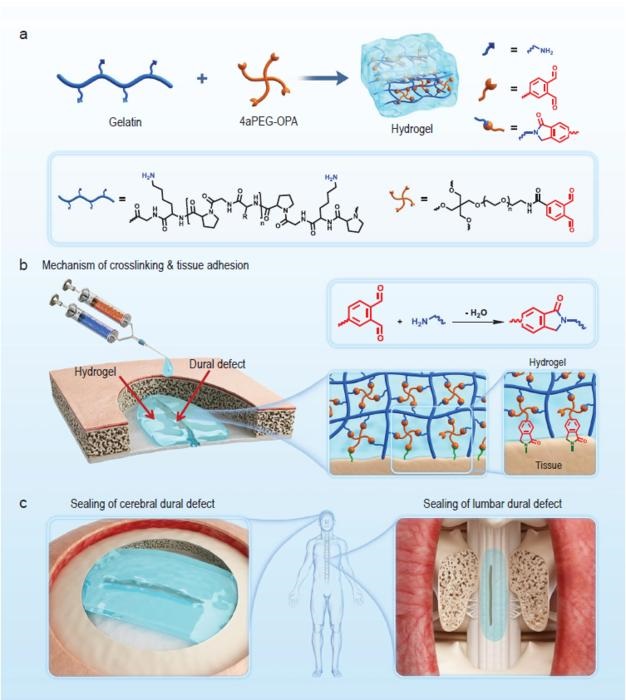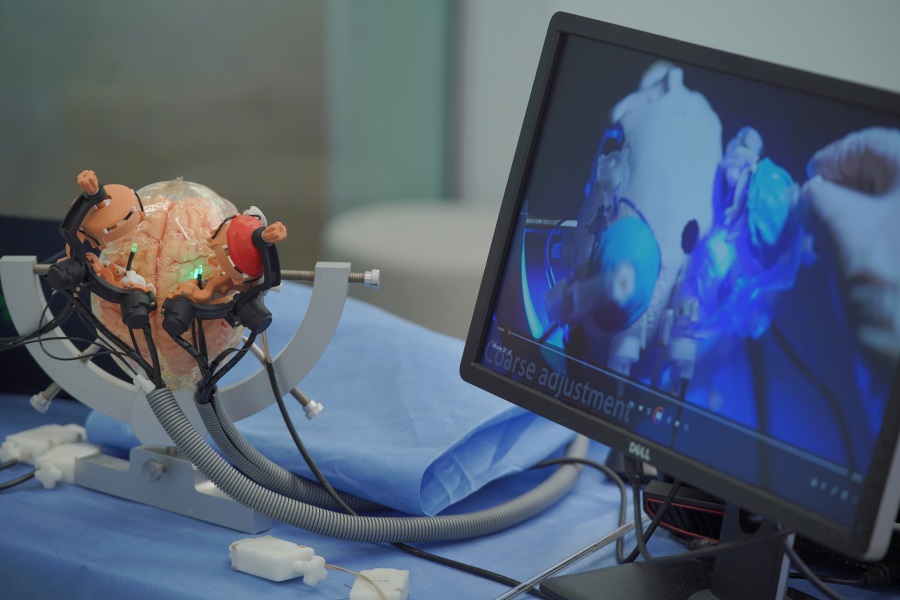Dynavax Doses First Participants in Phase 1 Clinical Trial of COVID-19 Vaccine
|
By HospiMedica International staff writers Posted on 22 Jun 2020 |

Image: SCB-2019, S-Trimer COVID-19 Vaccine (Photo courtesy of Clover Biopharmaceutical)
Dynavax Technologies Corporation (Emeryville, CA, USA) has dosed the first participants in the Phase 1 clinical trial to evaluate Clover Biopharmaceutical’s (Chengdu, China) vaccine candidate to prevent COVID-19 that contains the company’s CpG 1018 adjuvant.
Under their collaboration, Clover is advancing its COVID-19 S-Trimer vaccine (SCB-2019), which is based on its proprietary Trimer-Tag vaccine technology platform, while Dynavax is providing the company’s proprietary toll-like receptor 9 (TLR9) agonist adjuvant, CpG 1018. S-Trimer is a trimeric SARS-CoV-2 spike (S)-protein subunit vaccine candidate. Similar to other enveloped RNA viruses such as HIV, RSV and Influenza, SARS-CoV-2 is also an RNA virus that has a trimeric spike (S) protein on its viral envelope. The trimeric S protein of SARS-CoV-2 is responsible for binding to host cell surface receptor ACE2 and subsequent viral entry, making it the primary target antigen for vaccine development. S-Trimer resembles the native trimeric viral spike protein and is produced via a rapid mammalian cell-culture based expression system.
The Phase 1 randomized, double blind, placebo controlled, first-in-human (FIH) study will assess safety, reactogenicity, and immunogenicity of SCB-2019 at multiple dose levels, administered as two intramuscular injections in approximately 90 adult healthy subjects 18 to 54 years of age and approximately 60 elderly healthy subjects 55 to 75 years of age. The Phase 1 study will evaluate SCB-2019 alone, SCB-2019 in combination with Dynavax’s CpG 1018 adjuvant combined with alum, and SCB-2019 in combination with a different adjuvant. Based on preclinical results demonstrating the ability of CpG 1018-adjuvanted SCB-2019 to elicit neutralizing antibodies in multiple animal species, the collaboration has been expanded to include clinical supply of CpG 1018 to Clover. Preliminary safety and immunogenicity results of the study are expected in August 2020.
“We are proud to contribute CpG 1018 to this global effort to rapidly develop an adjuvanted vaccine to prevent COVID-19,” said Ryan Spencer, Chief Executive Officer of Dynavax. “CpG 1018’s ability to enhance the immune response, as successfully demonstrated in HEPLISAV-B, is expected to reduce the dose of antigen needed, helping ensure broader availability to patients. Additionally, an adjuvanted vaccine may be especially important for older adults and people with chronic conditions who are traditionally less responsive to vaccination and have the greatest risk of severe disease and death from COVID-19.”
Related Links:
Dynavax Technologies Corporation
Clover Biopharmaceutical
Under their collaboration, Clover is advancing its COVID-19 S-Trimer vaccine (SCB-2019), which is based on its proprietary Trimer-Tag vaccine technology platform, while Dynavax is providing the company’s proprietary toll-like receptor 9 (TLR9) agonist adjuvant, CpG 1018. S-Trimer is a trimeric SARS-CoV-2 spike (S)-protein subunit vaccine candidate. Similar to other enveloped RNA viruses such as HIV, RSV and Influenza, SARS-CoV-2 is also an RNA virus that has a trimeric spike (S) protein on its viral envelope. The trimeric S protein of SARS-CoV-2 is responsible for binding to host cell surface receptor ACE2 and subsequent viral entry, making it the primary target antigen for vaccine development. S-Trimer resembles the native trimeric viral spike protein and is produced via a rapid mammalian cell-culture based expression system.
The Phase 1 randomized, double blind, placebo controlled, first-in-human (FIH) study will assess safety, reactogenicity, and immunogenicity of SCB-2019 at multiple dose levels, administered as two intramuscular injections in approximately 90 adult healthy subjects 18 to 54 years of age and approximately 60 elderly healthy subjects 55 to 75 years of age. The Phase 1 study will evaluate SCB-2019 alone, SCB-2019 in combination with Dynavax’s CpG 1018 adjuvant combined with alum, and SCB-2019 in combination with a different adjuvant. Based on preclinical results demonstrating the ability of CpG 1018-adjuvanted SCB-2019 to elicit neutralizing antibodies in multiple animal species, the collaboration has been expanded to include clinical supply of CpG 1018 to Clover. Preliminary safety and immunogenicity results of the study are expected in August 2020.
“We are proud to contribute CpG 1018 to this global effort to rapidly develop an adjuvanted vaccine to prevent COVID-19,” said Ryan Spencer, Chief Executive Officer of Dynavax. “CpG 1018’s ability to enhance the immune response, as successfully demonstrated in HEPLISAV-B, is expected to reduce the dose of antigen needed, helping ensure broader availability to patients. Additionally, an adjuvanted vaccine may be especially important for older adults and people with chronic conditions who are traditionally less responsive to vaccination and have the greatest risk of severe disease and death from COVID-19.”
Related Links:
Dynavax Technologies Corporation
Clover Biopharmaceutical
Latest COVID-19 News
- Low-Cost System Detects SARS-CoV-2 Virus in Hospital Air Using High-Tech Bubbles
- World's First Inhalable COVID-19 Vaccine Approved in China
- COVID-19 Vaccine Patch Fights SARS-CoV-2 Variants Better than Needles
- Blood Viscosity Testing Can Predict Risk of Death in Hospitalized COVID-19 Patients
- ‘Covid Computer’ Uses AI to Detect COVID-19 from Chest CT Scans
- MRI Lung-Imaging Technique Shows Cause of Long-COVID Symptoms
- Chest CT Scans of COVID-19 Patients Could Help Distinguish Between SARS-CoV-2 Variants
- Specialized MRI Detects Lung Abnormalities in Non-Hospitalized Long COVID Patients
- AI Algorithm Identifies Hospitalized Patients at Highest Risk of Dying From COVID-19
- Sweat Sensor Detects Key Biomarkers That Provide Early Warning of COVID-19 and Flu
- Study Assesses Impact of COVID-19 on Ventilation/Perfusion Scintigraphy
- CT Imaging Study Finds Vaccination Reduces Risk of COVID-19 Associated Pulmonary Embolism
- Third Day in Hospital a ‘Tipping Point’ in Severity of COVID-19 Pneumonia
- Longer Interval Between COVID-19 Vaccines Generates Up to Nine Times as Many Antibodies
- AI Model for Monitoring COVID-19 Predicts Mortality Within First 30 Days of Admission
- AI Predicts COVID Prognosis at Near-Expert Level Based Off CT Scans
Channels
Artificial Intelligence
view channel
AI-Powered Algorithm to Revolutionize Detection of Atrial Fibrillation
Atrial fibrillation (AFib), a condition characterized by an irregular and often rapid heart rate, is linked to increased risks of stroke and heart failure. This is because the irregular heartbeat in AFib... Read more
AI Diagnostic Tool Accurately Detects Valvular Disorders Often Missed by Doctors
Doctors generally use stethoscopes to listen for the characteristic lub-dub sounds made by heart valves opening and closing. They also listen for less prominent sounds that indicate problems with these valves.... Read moreCritical Care
view channel
AI Doubles Medical Professionals’ Accuracy in Reading EEG Charts of ICU Patients
Electroencephalography (EEG) readings are crucial for detecting when unconscious patients may be experiencing or are at risk of seizures. EEGs involve placing small sensors on the scalp to measure the... Read moreFlexible Device Enables Sweat Gland Stimulation and Simultaneous Biosensing
Human sweat is rich in biomarkers that can be used to monitor a range of health conditions, from diabetes to genetic disorders. Many users prefer sweat sampling over blood collection because it is painless.... Read more
WHO Publishes First Global Guidelines to Reduce Bloodstream Infections from Catheter Use
Up to 70% of all inpatients require a catheter, specifically a peripherally inserted catheter (PIVC), at some point during their hospital stay. Patients who receive treatments via catheters are particularly... Read moreSurgical Techniques
view channel
Study Warns Against Dangerous Smoke Levels Produced During Endoscopic Gastrointestinal Procedures
Healthcare professionals involved in certain smoke-generating endoscopic gastrointestinal procedures, such as those using electrical current to excise polyps, may be exposed to toxin levels comparable... Read more
New Hydrogel Sealant Effective at Sealing Dural Defects and Preventing Postoperative Adhesion
The dura mater is a fibrous membrane of connective tissue that envelops the brain and spinal cord. In neurosurgical procedures that require access to the brain or spinal cord, opening the dura mater often... Read more
MRI-Guided Multi-Stage Robotic Positioner Enhances Stereotactic Neurosurgery Precision
Magnetic resonance imaging (MRI) offers significant benefits in neurosurgery, providing detailed 3D visualizations of neurovascular structures and tumors. Traditionally, its use has been restricted to... Read morePatient Care
view channelFirst-Of-Its-Kind Portable Germicidal Light Technology Disinfects High-Touch Clinical Surfaces in Seconds
Reducing healthcare-acquired infections (HAIs) remains a pressing issue within global healthcare systems. In the United States alone, 1.7 million patients contract HAIs annually, leading to approximately... Read more
Surgical Capacity Optimization Solution Helps Hospitals Boost OR Utilization
An innovative solution has the capability to transform surgical capacity utilization by targeting the root cause of surgical block time inefficiencies. Fujitsu Limited’s (Tokyo, Japan) Surgical Capacity... Read more
Game-Changing Innovation in Surgical Instrument Sterilization Significantly Improves OR Throughput
A groundbreaking innovation enables hospitals to significantly improve instrument processing time and throughput in operating rooms (ORs) and sterile processing departments. Turbett Surgical, Inc.... Read moreHealth IT
view channel
Machine Learning Model Improves Mortality Risk Prediction for Cardiac Surgery Patients
Machine learning algorithms have been deployed to create predictive models in various medical fields, with some demonstrating improved outcomes compared to their standard-of-care counterparts.... Read more
Strategic Collaboration to Develop and Integrate Generative AI into Healthcare
Top industry experts have underscored the immediate requirement for healthcare systems and hospitals to respond to severe cost and margin pressures. Close to half of U.S. hospitals ended 2022 in the red... Read more
AI-Enabled Operating Rooms Solution Helps Hospitals Maximize Utilization and Unlock Capacity
For healthcare organizations, optimizing operating room (OR) utilization during prime time hours is a complex challenge. Surgeons and clinics face difficulties in finding available slots for booking cases,... Read more
AI Predicts Pancreatic Cancer Three Years before Diagnosis from Patients’ Medical Records
Screening for common cancers like breast, cervix, and prostate cancer relies on relatively simple and highly effective techniques, such as mammograms, Pap smears, and blood tests. These methods have revolutionized... Read morePoint of Care
view channel
POCT for Infectious Diseases Delivers Laboratory Equivalent Pathology Results
On-site pathology tests for infectious diseases in rural and remote locations can achieve the same level of reliability and accuracy as those conducted in hospital laboratories, a recent study suggests.... Read more
Cartridge-Based Hemostasis Analyzer System Enables Faster Coagulation Testing
Quickly assessing a patient's total hemostasis status can be critical to influencing clinical outcomes and using blood products. Haemonetics Corporation (Boston, MA, USA) has now obtained 510(k) clearance... Read more
Critical Bleeding Management System to Help Hospitals Further Standardize Viscoelastic Testing
Surgical procedures are often accompanied by significant blood loss and the subsequent high likelihood of the need for allogeneic blood transfusions. These transfusions, while critical, are linked to various... Read moreBusiness
view channel
MEDICA INNOVATION FORUM for the Healthcare Innovations of the Future
By always offering innovations and updating existing program formats, the internationally leading medical trade fair MEDICA in Düsseldorf has been successful for over half a century and always gives its... Read more

















